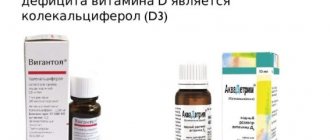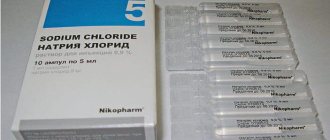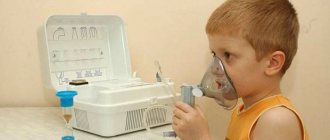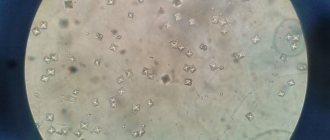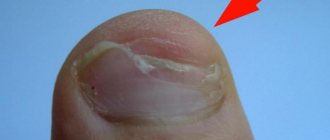Pharmacological properties
The main components of the product regulate the metabolic processes of calcium and phosphorus in the body, saturate and replenish the lack of vitamin D3. The substances increase the level of calcium absorption into the intestines and the reabsorption of phosphates in the renal system.
The medication saturates the skeletal system with organic substances and inorganic salts and supports the normal functioning of the parathyroid glands.
Pharmacodynamics and pharmacokinetics
When administered orally, the main substance is absorbed from the small intestine. When ingested, the components interact with a2-globulin, and partially with albumin. The active component accumulates in the liver tissues, skeletal system, kidneys, adrenal glands, adipose tissue and myocardium.
The maximum level of drug concentration is achieved 4-5 hours after oral administration. The level of metabolites decreases slightly and remains unchanged for a long time. The drug penetrates the placental barrier and passes into breast milk.
The drug is metabolized in the liver and kidneys. In the liver tissues, the main component is converted into an inactive metabolite - calcifediol. In the kidneys, the component is converted from an inactive metabolite to the active substance calcitriol.
Subsequently, the drug undergoes natural decay processes in the intestines and liver. Most metabolites are excreted along with bile. To a small extent, breakdown products are excreted by the kidneys.
Indications for use
The medicine is used as a primary or supporting agent.
Indications:
- development of rickets – as a prophylaxis or primary treatment;
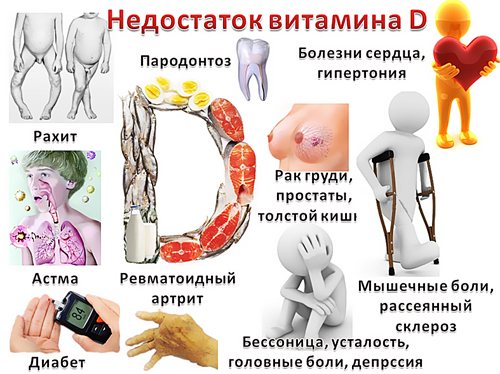
Vigantol for children is prescribed when symptoms of vitamin D deficiency appear - prevention of vitamin D3 deficiency - malabsorption syndrome, chronic forms of pathologies in the small intestine, rehabilitation after partial removal of the stomach or small intestine, biliary form of liver cirrhosis;
- osteoporosis – as a maintenance treatment;
- hypoparathyroidism or pseudosyndrome disease.
The drug is also prescribed for osteomalacia resulting from impaired mineralization in patients over 45 years of age, while following diets with complete or partial abstinence from milk and dairy products, as well as as a treatment for joint immobility or injuries.
Indications
The solution is used both as part of complex treatment and as an independent remedy.
The main indication is a condition in which symptoms of vitamin deficiency are noted. Substance deficiency can manifest itself in different ways.
The instructions for the drug include the following indications for use:

- spasmophilia;
- skin pathologies (acne or psoriasis);
- rickets;
- hypoparathyroidism;
- osteomalacia.
In certain situations, drops are prescribed for preventive purposes . The dosage will vary.
When taking the drug, it is advisable to monitor the level of vitamins in the body.
Contraindications
Vigantol for a child (reviews of the product indicate some restrictions on the use of drops) is prescribed only in the absence of contraindications.
Contraindications:
- increased levels of calcium in the body;
- excretion of calcium salts along with urine;
- presence of thyrotoxicosis;
- urolithiasis that occurs against the background of an increased content of calcium salts;
- high levels of vitamin D3 in the body;
- osteodystrophic changes in the kidneys, accompanied by hyperphosphatemia.
The drug is used with extreme caution in patients with pronounced signs of atherosclerosis, heart and kidney failure, with some forms of granulomatosis, and high levels of inorganic phosphates.
Great care should be taken when prescribing the drug for severe pathologies of the liver and kidneys, organic heart diseases, hypothyroidism, and gastrointestinal disorders.
The medication is contraindicated during pregnancy and breastfeeding.
Components and description of the drug
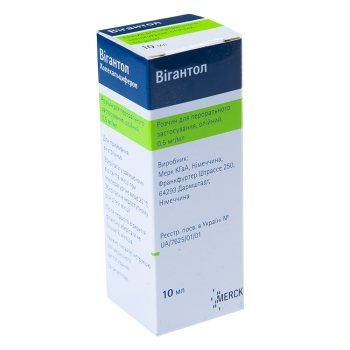
Vigantol for children is available in drop format. They are used for vitamin D deficiency.
The main function of vitamin D is the regulation of phosphorus and calcium metabolism in the body. Thanks to this process, bones are formed, growth occurs, and organs develop.
A lack of vitamin D can increase the likelihood of spontaneous fractures. The child’s growth slows down, immunity decreases and the work of internal organs slows down.
Vigantol is an oil-based solution . The main active ingredient of the drug is cholecalciferol, a source of vitamin D3.
Triglycerides take on the role of excipients.
The solution is in a darkened glass bottle equipped with a dropper. Its volume is 10 ml. The liquid has no characteristic taste or aroma.
Main functions of the drug:
- influence on the process of adenosine triphosphoric acid synthesis;
- regulation of the process of excretion of mineral salts from the body;
- increased calcium absorption;
- improving bone tissue strength;
- increased absorption of phosphoric acid salts.
If you don’t know how to give Plantex to breastfed newborns, read our publication.
Is it possible to give Bobotik to a newborn? Find the answer to the question in this material.
Instructions for use and reviews of the drug Joset for children are presented here.
Instructions for use, dosage of the drug
The drug is taken orally and is prescribed in childhood, starting from the 2nd week of life.
- When preventing rickets, children born at term are prescribed 1 drop of solution per day, premature babies - 2 drops per day. Take the solution during the 1st and 2nd year of the child’s life.
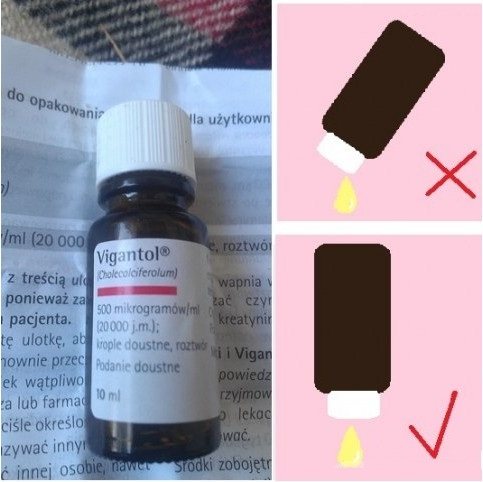
- With the development of rickets, 2-8 drops of the drug per day are prescribed. The course of treatment is 12 months.
- When preventing vitamin D3 deficiency, the recommended dosage is 1-2 drops per day.
- When preventing vitamin D3 deficiency associated with malabsorption syndrome, 5-8 drops of the drug per day are prescribed.
- For osteomolation, the recommended dosage is 2-8 drops per day. The course lasts 12 months.
- With the development of osteoporosis, 2-5 drops per day are used as maintenance treatment.
- For hypoporthyroidism, as well as pseudosyndrome, the daily dosage is from 15 to 30 drops. This requires constant monitoring of the level of calcium in the child’s blood.
Allergy to vigantol • How to cure allergies
A newborn baby brings great joy to parents.
Concern for his health and well-being comes first. Since the baby's immunity has not yet been formed, it needs to be strengthened. For this, the pediatrician prescribes a number of medications. One of them is vitamin D, which is used to prevent rickets. The modern form of the drug is easily digestible, but there are exceptions.
Sometimes a child develops an allergy to Vigantol.
Scope of application of the drug
The drug Vigantol is prescribed for the prevention and treatment of rickets. It is a liquid oil preparation that replenishes the lack of vitamin D3 in the child’s body.
With its participation, the process of regulation and absorption of calcium and phosphorus occurs. Vigantol helps to achieve the correct balance of minerals, strengthens the infant's bone skeleton and musculoskeletal system. The dosage of the medicine is determined by the doctor.
You need to drink it for more than one month. Depending on the child’s condition, the following is prescribed:
- For prevention, 1 drop daily.
- For premature babies and for rickets, the dose is from 2 to 7 drops.
- Malabsorption requires up to 10 drops per day.
Preventing vitamin D deficiency in infants using synthetic drugs is a necessary measure. In the body, D3 is synthesized mainly only in the warm season. This happens when the skin comes into direct contact with the sun's rays.
Where is it contained?
Vitamin D is so important for the human body that its synthesis occurs in the skin when a person is outdoors in sunny weather.
Therefore, vitamin deficiency is often observed in people who spend a large amount of time indoors or go outside mainly at night.
In kind
Large amounts of vitamin D are found in the following natural products:
- dairy products;
- eggs;
- Cod liver;
- fish fat;
- parsley;
- mushrooms;
- sunflower seeds;
- potato;
- salmon;
- herring;
By the way, plant foods contain much less vitamin D than animal products.
Therefore, vegans should remember that they are the main risk group under attack, and either resort to consuming medications with vitamin D, or occasionally consume animal products.
Vegetarians are not in the affected area because they consume:
In chemical form
Pharmaceutical drugs include:
- Aquadetrim;
- Vigantol;
- Rocaltrol;
- Alpha D3-TEVA;
- Calcium D3 – Nycomed;
- Videohol;
- Osteothreol;
- Etalfa.
The pharmaceutical market offers many drugs that contain either pure vitamin D or it is part of mixtures.
Types and causes of allergic reactions
An allergy to vigantol in an infant develops due to an imperfect immune system. There are several types of it:
- It is not the vitamin itself that acts as an antigen, but the substances and additives included in the drug. The oil base of the drug can stimulate the growth of pathogenic microflora in the intestines during dysbacteriosis. Intoxication results in an allergic reaction.
- An allergic response in infants can be caused by hypervitaminosis, or excess vitamin D3. To avoid this, careful monitoring of calcium levels in the baby's blood is necessary.
INTERESTING! An allergic reaction to Vigantol in some babies appears against the background of teething.
How to treat?
At the first signs of an allergy, it is important that the child’s parent or adult taking the drug does not panic. The first thing to do is to stop using the product that caused such a reaction. It is then important to consult with your doctor to decide on the prescription and dosage of antihistamines. Not all of them are suitable for infants.
With the development of Quincke's edema, doctors are forced to provide first aid using systemic corticosteroid drugs.
If a child has severe skin rashes, creams, gels, ointments, and “talkers” are prescribed to eliminate them.
However, without consulting a doctor, you should not use such drugs, since some of them are hormonal in nature and may be contraindicated in this case.
After the allergic reaction is eliminated, you should pay attention to other drugs containing vitamin D. Nursing women should make sure that their diet is enriched with products that include it. Well, walking in the fresh air under the gentle rays of the sun will not bring harm, but will only be useful for people with a lack of a useful element in the body.
Symptoms and treatment
If an allergy to vigantol occurs, the symptoms in infants are pronounced. The main symptom is a bright red rash that appears on the cheeks and tummy. It can also rash on the buttocks and groin area. The child is worried and cries often. Additional symptoms:
- Vomiting and loose, frequent stools.
- Pain in the epigastric region.
- Rarely, increased blood pressure and arrhythmia occur.
As soon as such signs appear, you should immediately stop taking Vigantol and consult a doctor. Treatment consists of discontinuing the drug and prescribing antihistamine therapy to relieve allergies. These are tablets (Diazolin) and ointment for rashes (Fenistil, Bepanten). As an alternative, the pediatrician prescribes another product containing vitamin D3. This may be an aqueous solution of AquaDetrim.
How allergies manifest themselves in infants, how to identify and treat them
Modern ecology, food and many other factors often provoke allergic reactions. The problem can occur at any age, even at a very young age.
Most often, infants develop allergies to foods. They contain a protein that excites the nervous system. In response, it begins to produce immunoglobulin type E.
The allergen does not always die during heat treatment, and sometimes even enhances its effect.
All about the reasons causing the problem
Allergies in an infant can occur both during natural and artificial feeding. In the first case, the food that the mother eats plays a role. In the second case, the reasons are the composition of the adapted mixture and non-compliance with its dilution regime. A rash appears on the butt and groin.
The mother needs to breastfeed her baby for as long as possible and keep a food diary. It will record the foods eaten and the reaction of the baby’s body. This will make it easier to identify the allergen.
The reasons why the reaction occurs in children under one year of age are the following: fetal hypoxia (lack of oxygen during gestation), viral or bacterial infections, diseases of the digestive system.
Against the background of these factors, the fragile intestinal mucosa becomes even more permeable. The allergen easily enters the bloodstream and causes unpleasant symptoms.
Treatment should be started immediately.
The reasons may be heredity. If parents suffer from allergies, then there is more than a 50% chance that the disease will recur in the child.
Allergies in children under one year of age may be associated with cosmetics. You need to carefully choose powder for washing baby clothes, shampoos, lotions.
The reasons may also be in the diaper. Redness appears on the butt and groin, which is accompanied by a rash. Treatment begins with changing the selected brand of diapers. You should also take longer air baths.
Unpleasant symptoms on the butt and other parts of the body in children can occur due to plant pollen, dust, animal hair, and tablets.
The causes of allergies may be hidden in the use of certain medications. Almost all children are prescribed medications to compensate for the lack of vitamin D in the body. Among these medications is Vigantol.
Vigantol drops are prescribed to treat and prevent rickets, as a prophylaxis for conditions associated with a lack of vitamin D or diseases of the musculoskeletal system.
Since infants' immunity is not very strong, allergies to Vigantol are quite common. Allergies intensify or begin to appear for the first time during teething. To understand that the cause of the unpleasant symptoms was teeth, and not the drug Vigantol, it should be given before and after the period of teeth appearing.
Often, already in the maternity hospital, they begin to give medications (syrups, tablets and drops) against colic, including Espumisan drops. Almost all drugs contain dyes and flavors, and therefore cause allergies in the form of a rash on the butt, face, and groin.
Signs of the disease
In order to identify the problem in time, parents need to know what allergies look like in infants.
Source: https://dshi10krd.ru/lekarstva-i-bady/allergiya-na-vigantol-u-rebenka.html
Side effects
Vigantol is usually well tolerated. However, according to the instructions in the instructions and reviews from parents, due to the age of the child, the drug can cause various side effects.
| Violation area | Side effect |
| From the digestive tract | Frequent constipation, nausea and vomiting, bloating, diarrhea, development of abdominal pain, lack of appetite. |
| From the side of metabolic processes | Increased calcium levels in the body, high levels of calcium salts in the urine with prolonged use of the medicine. Polyuria. |
| From the muscle tissue and skeletal system | Myalgia, arthralgia. |
| From the cardiovascular system | Increased blood pressure, development of arrhythmias. |
| Allergic manifestations | Itching, rashes, urticaria |
| Other violations | Migraines, kidney dysfunction, complicated tuberculosis. |
If a side effect occurs that is not listed in the instructions, you should consult a specialist.
Overdose
If the dose specified in the instructions is exceeded, various negative reactions may occur.
Overdose symptoms:
- bowel disorders - diarrhea, constipation;
- dry mouth;
- headache;
- constant thirst;
- metallic taste in the mouth;
- nausea, vomiting;
- weakness and fatigue, drowsiness;
- nocturia;
- polyuria;
- weight loss;
- high levels of calcium and its salts in the blood and urine;
- dehydration;
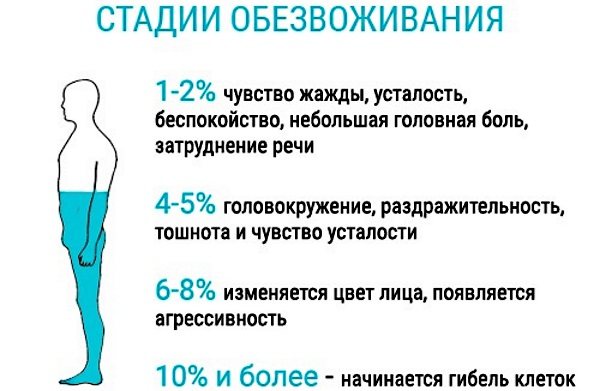
- pollakiuria;
- changes in the quality and composition of urine;
- body aches, bone pain;
- increased blood pressure;
- development of arrhythmias;
- myalgia;
- gastralgia;
- signs of pancreatitis;
- psycho-emotional changes, in severe cases – neuroses.
With prolonged use of the solution, the development of chronic forms of overdose is observed. In this case, calcification of internal organs develops, signs of heart and kidney failure are noted, and growth disturbance occurs in children.
If symptoms of overdose develop, treatment is prescribed. Possible measures: complete withdrawal of the drug, calcium-free diet, consumption of large amounts of fluid. Corticosteroid drugs, vitamins A and E, riboflavin, thiamine, ascorbic or pantothenic acid are also prescribed.
In severe cases, infusion solutions based on sodium hydrochloride and furosemide are used. Hemodialysis is prescribed.
Features of the manifestation of an allergic reaction
Allergies in infants and young children appear very often and in most cases they are pronounced. The problem is that the body’s reaction to all irritants intolerable to it is almost the same:
- rash in certain areas of the body or throughout the body;
- skin redness and itching;
- loose stools;
- vomit;
- temperature increase.
If we talk specifically about vigantol, here mothers most often notice a rash and redness of the skin, and diarrhea in their children.

Manifestations of allergies may be accompanied by teething, during which the child’s immunity becomes weaker. If this situation occurs, you should inform your doctor about it. It may be necessary to simply postpone taking Vigantol until the child’s condition has stabilized.
To avoid such an unpleasant set of circumstances, you need to start taking vigantol either before teething or after its completion. Then it will be clear exactly what the child’s body reacts to negatively - to the medicine or to the appearance of the first teeth.
special instructions
Vigantol for a child (reviews of the product indicate the need to take precautions when using) is prescribed only after all the necessary diagnostic procedures.
If signs of pseudohypoparathyroidism develop, it is recommended to undergo an examination to determine the presence of a toxic lesion. In this case, the daily dosage of the drug should be adjusted.
For thyroid therapy-induced syndrome, gradual withdrawal of the medication is recommended as the parathyroid glands recover. These measures are necessary to prevent intoxication. The product has not been tested for its ability to drive vehicles or perform work requiring increased concentration.
Drug interactions
Pharmacological agents from the group of barbiturates, as well as phenytoin and primidone, affect metabolic processes associated with the rate of absorption and distribution of D3.
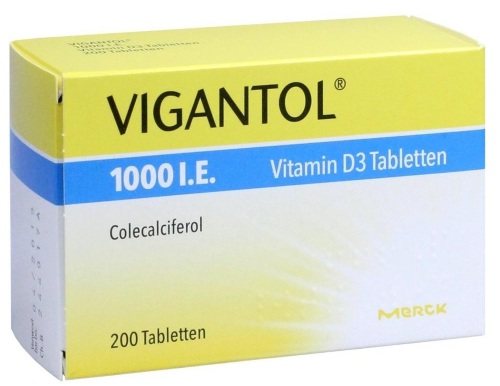
The simultaneous use of medication and antacids increases the risk of developing signs of intoxication caused by an increased content of aluminum and magnesium ions. There is a decrease in the therapeutic effect when the drug is combined with calcitonin or bisphosphonates.
The level of absorption of fat-soluble vitamins is reduced when using cholestyramine and colestipol. The risk of developing hyperphosphatemia increases significantly when using an oil solution simultaneously with drugs containing phosphorus.
When prescribing Vigantol and sodium fluoride simultaneously, it is necessary to maintain an interval between doses of at least 2 hours. When prescribing the tetracycline group of medications, the interval should be at least 3 hours. Simultaneous use with steroid drugs leads to a decrease in the effectiveness of the drug.
Cardiac glycosides can lead to drug interactions, causing symptoms of intoxication. In this case, it is necessary to monitor the patient's condition and adjust the dosage. The product can be combined with medications of the same pharmacological group only with the permission of a specialist and under his supervision.
Diuretics from the thiazide class impair the excretion of the components of the oil solution. In rare cases, hypercalcemia develops. The effectiveness of the drug is reduced with simultaneous use of rifampicin and isoniazid.
Prevention measures
The medication is taken as prescribed by a doctor, so unauthorized withdrawal of the drug will lead to unpleasant consequences. If an allergy to Vigantol in a child worsens the quality of life, it is recommended to listen to preventive measures:
- do not prescribe the medicine yourself, in case of a medical recommendation, do not change the dosage; the exception is cases of obvious intolerance, in which discontinuation of the drug reduces the symptoms;
- before starting to take Vigantol, offer the child 1/2 of the prescribed single dose to establish a reaction to the drug: it is easier to prevent an allergy than to eradicate it; It is not recommended to reduce the dose of the drug if sensitivity is suspected - it is better to discontinue it until the reasons are clarified;
- when selecting a prescription that includes vitamin D3, preference should be given to a medicine with a minimal set of auxiliary inclusions;
- Mother's milk is a source of calcium and vitamin D, necessary for its absorption; an established breastfeeding regimen provides the baby with a sufficient amount of vitamin and eliminates rickets; in the absence of breast milk, vitamin-enriched formulas are recommended, but it is important to follow the dosage so as not to get an allergic reaction to an excess of vitamin;
- doctors notice that allergies to Vigantol in infants are more common during teething, since resistance functions are reduced during this period;
- ultraviolet radiation in the sun is a natural provocateur for the synthesis of vitamin D; staying in the fresh air for at least 3 hours a day provides a constant supply of the beneficial component; At the same time, it is important to understand that sunbathing in a newborn is not permissible from 11 a.m. to 4 p.m.;
- inclusion of foods rich in vitamin D in the diet of preschoolers and adolescents will avoid the use of synthetic medicinal analogues; meat, liver, fish, eggs, dairy products are tasty and healthy components of the daily diet that help avoid rickets.
An allergy to Vigantol causes concern among parents, but discontinuation of the drug can harm the child’s growing body. Accurate diagnosis of pathology, therapeutic measures and medications reduce allergic manifestations and prevent complications from developing, and exposure to the sun helps to cope with vitamin D deficiency.
Analogs
Vigantol for a child (reviews report rare cases of intolerance to the components) in the presence of allergic reactions can be replaced with other drugs.
Analogues:
- Aquadetrim. This is a pharmaceutical product made in Poland. It is dispensed in the form of an oil solution for oral use. The active component of the drug is colecalciferol.
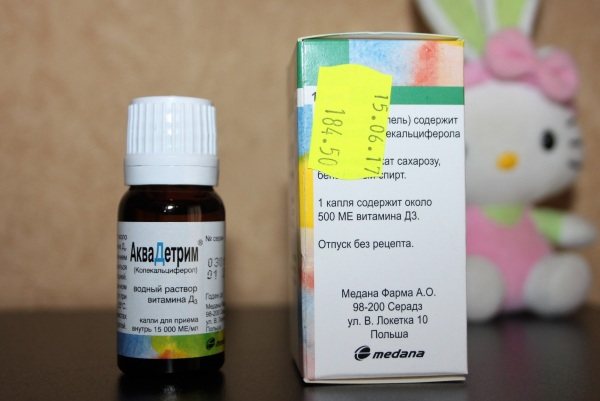
The medication belongs to the group of vitamin-like drugs that help regulate the metabolic processes of calcium and phosphorus. The medicine is used for vitamin D deficiency, as well as as part of a complex treatment of osteoporosis. The drug is also effective in the treatment of osteomalacia and rickets. The dosage and course of treatment are determined by the treating specialist on an individual basis. The drug has multiple contraindications, and therefore, mandatory consultation with a specialist is necessary. Cost – from 190 rub. - Ultra D. This dietary supplement is available in the form of chewable tablets. Manufacturer – Finland. Its main substance is colecalciferol. The medication is prescribed for various disorders and disorders associated with a lack of vitamin D in the body. Daily dosage – 1/2 capsule per day. The duration of therapy is determined individually. The medicine can be used in childhood. Its contraindication is high sensitivity to the components included in the product. Cost – 750 rub.
- Complivit Aqua D3. This is a domestically produced medical product, produced in the form of drops for oral use. Its main substance is colecalciferol. The action of the active components is aimed at regulating calcium and phosphorus in the body, as well as eliminating diseases and disorders associated with calcium deficiency in the body. The medication can be used in childhood from 4 weeks of life. The dosage and duration of the course depend on the severity of the disorder. Cost – from 161 rub.
Before replacing a fixed asset, you should consult a specialist.
A few words about why babies need vitamin D
Vitamin D is a biologically active substance:
- Cholecalciferol - (vitamin D3) is produced in the skin under the influence of ultraviolet radiation when exposed to the sun and can be ingested by the body with food.
- Ergocalciferol - (vitamin D2) comes exclusively from food (limited types).
Vitamin D3 is one of the most important substances necessary for a rapidly growing body, regulating phosphorus-calcium metabolism.
Thanks to this vitamin, the mineralization of the skeleton occurs, and the child’s bones actively grow. The baby develops good posture, a correct physique, his limbs grow straight and beautiful. In addition, the vitamin strengthens the immune system, helps you get sick less and cope with colds more easily.

With a lack of this important biologically active substance, rickets can develop, a rare disease in our time that can affect children under three years of age who are in the active growth phase.
The pathology is associated with vitamin D deficiency and a disorder of phosphorus-calcium metabolism, which causes specific damage to bone tissue.
As a result, the child’s stomach becomes bulging, and the legs may become curved, acquiring an X- or O-shape. These changes are irreversible, so the prevention of rickets must be taken seriously.
Children born in the autumn-winter period, as well as those born with low birth weight (which often happens when born before the due date), are more vulnerable to rickets.
The risk of developing rickets is also increased in children living in regions with reduced solar activity. In these cases, taking vitamin D is definitely justified.
Price in pharmacies in Moscow, St. Petersburg, regions
The cost of the product may vary slightly depending on the area and region of sales. The price of the drug in pharmacies in Moscow and the Moscow region ranges from 90 to 1390 rubles. per bottle. The cost in pharmacies in St. Petersburg and its suburbs varies between 163-245 rubles.
Before using Vigantol in childhood, parents should consult a specialist and read the official instructions for use of the solution. Additionally, it is recommended to study patient reviews.
Article design: Vladimir the Great
